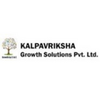Introduction
Piping Design Engineering Services play a critical role in various industries, including oil and gas, chemical, power generation, and more. Properly designed piping systems ensure the safe and efficient transportation of fluids, gases, and other materials. In this comprehensive guide, we will walk you through the step-by-step process of achieving efficient piping design and engineering, highlighting key considerations, best practices, and industry insights.
Step 1: Preliminary Design and System Requirements
Before diving into the intricate details, it's crucial to start with a well-defined plan. Understand the project's objectives, system requirements, and constraints. Collaborate with stakeholders to identify factors such as fluid types, flow rates, pressures, temperatures, and environmental considerations.
Step 2: Material Selection and Compatibility
Selecting the right materials is essential for the longevity and safety of the piping system. Consider factors like material compatibility with transported fluids, corrosion resistance, and cost-effectiveness. Evaluate different options, such as metals, plastics, and composites, and ensure compliance with industry standards and regulations.
Step 3: System Layout and Sizing
Create a preliminary layout of the piping system, considering factors like accessibility, maintenance, and safety. Proper sizing of pipes, fittings, and components is vital to ensure optimal flow and minimize pressure losses. Utilize software tools and calculations to determine the appropriate pipe diameters and layouts.
Step 4: Hydraulic Analysis and Stress Calculation
Perform a hydraulic analysis to predict the behaviour of fluids within the piping system. This analysis aids in optimizing pipe sizes and routing to prevent issues like cavitation or excessive pressure drops. Additionally, conduct stress calculations to ensure the system can withstand mechanical loads and thermal expansions.
Step 5: Detailed Design and 3D Modelling
Transition from the conceptual stage to the detailed design phase. Utilize advanced 3D modelling software to create a comprehensive visual representation of the piping system. This step allows for precise coordination of components, clash detection, and enhanced visualization.
Step 6: Regulatory Compliance and Documentation
Adhere to industry codes, standards, and regulations to ensure the piping system meets safety and performance requirements. Maintain detailed documentation throughout the design and engineering process, including material specifications, design drawings, calculations, and test plans.
Step 7: Fabrication, Installation, and Testing
Collaborate with fabrication and installation teams to bring the design to reality. Oversee the fabrication process, conduct quality control checks, and perform thorough testing, such as pressure tests and leak detection, to verify the integrity of the piping system.
Step 8: Operation and Maintenance
Once the piping system is operational, establish a comprehensive maintenance plan. Regular inspections, preventive maintenance, and repairs are essential to prolong the system's lifespan and ensure its continued efficiency and safety.
Conclusion
Efficient piping design & engineering services are essential for the success of various industrial projects. By following this step-by-step guide, you can navigate the complexities of designing, analysing, and implementing a robust piping system. Remember that collaboration, adherence to industry standards, and a thorough understanding of fluid dynamics and material properties are key to achieving optimal results in piping design and engineering.

No comments yet